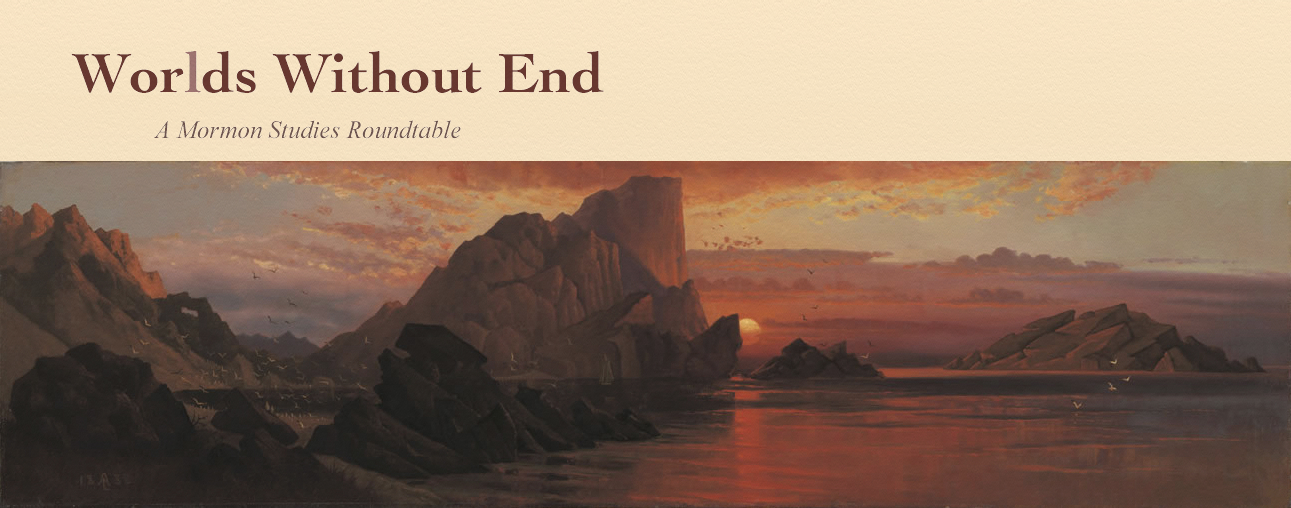Moroni and the Swastika: Mormons in Nazi Germany
By David Conley Nelson
Copyright 2015 University of Oklahoma Press
416 pages
ISBN: 978-0-8061-4668-3
$29.95
The contextual place of Mormonism in the nineteenth century is an increasingly broad subject, and there is no shortage of qualified historians who work to describe past events, revising and expanding on the work of previous scholars. There is a noticeably quantitative difference, however in the number of academics whose contributions to the field of Mormon Studies primarily address the Church of Jesus Christ of Latter-day Saints in the first half of the twentieth century. David Conley Nelson’s latest addition to this diverse body of literature on Mormonism clearly falls within the latter specialty. Unlike early Mormonism, which was replete with canonized revelations, visions, martyrdom, polygamy, and clashes between the Church and the U.S. government, its twentieth century identity was remarkably more socially integrated and politically active—exhibiting a conscious, calculated submission to civil authority both in the Intermountain West and in established ecclesiastical units abroad. This paradigm shift was clearly accented through the globalization of Mormonism spurned in the years immediately following Second World War, and solidified through executive actions implemented by the Church well into the 1960s. On an international level, the marked emphasis on adherence to secular laws began even earlier.
Latter-day Saint involvement in World War II has been the subject of a surprising number of scholarly works—written almost exclusively by Mormon authors—as well as many devotionalized historical-fiction novels, theatrical productions, and films. Nelson readily utilizes some of these resources in establishing the background and justification for writing Moroni and the Swastika: Mormons in Nazi Germany—the corpus of which was written as his doctoral dissertation at Texas A&M University. Nelson clarifies ambiguities and corrects some significant literary deficiencies produced by earlier authors, producers, and playwrights, endeavoring to rebut apparent faith promoting claims that sanitize or falsify the history of Mormonism in Nazi Germany. There has been a steady stream of material produced within the Mormon academic community that tells the stories of Latter-day Saints who lived in Axis nations during the conflict. Nelson’s work on Mormonism’s place in the Third Reich is an addendum to the recent scholarship of several other historians, and offers a new and distinctly more critical perspective on a considerably controversial topic. Nelson exhibits a style and level of detail reminiscent of what one might encounter in Will Bagley’s Blood of the Prophets or Keele and Tobler’s groundbreaking 1980 Sunstone paper “The Fuhrer’s New Clothes: Helmuth Hübener and the Mormons in the Third Reich.”
Although the subject of Moroni and the Swastika necessitates describing a distinctly Mormon experience in the Third Reich, there are portions that could benefit from more clarity and contextual clues that establish a broader framework for the events and policies described. Nelson goes to great lengths to document how some Latter-day Saints constructed an ideological bond between their theology and Nazism. A prevailing theme throughout Nelson’s book addresses how Mormons in Nazi Germany fell under Hitler’s propagandistic spell. The Mormon experience was somewhat unique in comparison to other faiths because its ecclesiastical doctrines, administrative policies, and connections to prominent American politicians may have preconditioned German members of the Church to seek out unique congruity with pre-war National Socialism. Continue reading

